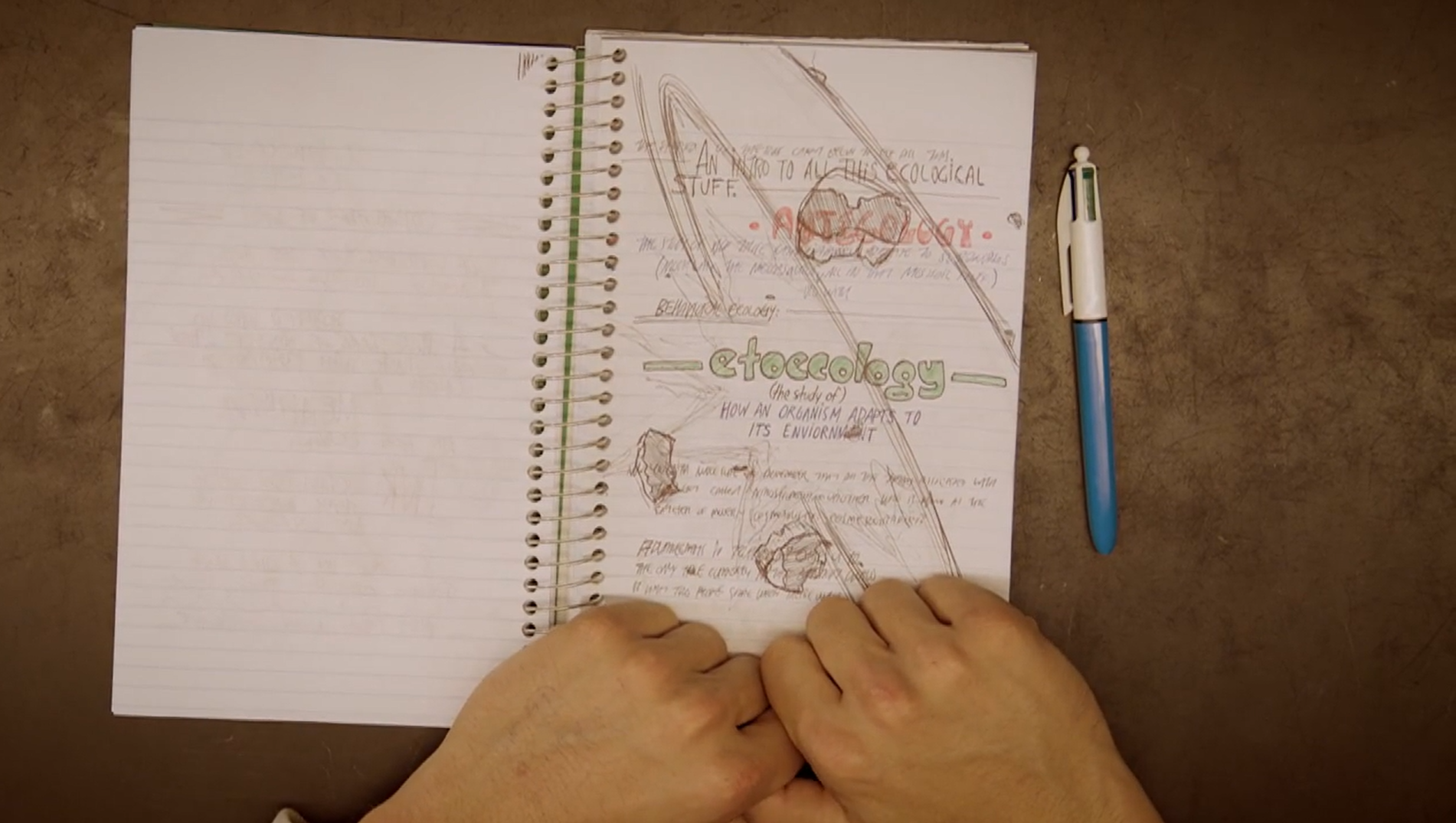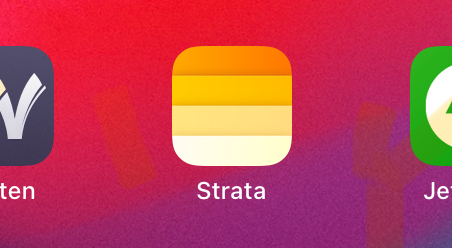Do I prefer Mastodon or Bluesky? No need to choose, just cross-post from my blog using micro.blog. POSSE FTW.
”You can automatically cross-post your microblog posts to Medium, Mastodon, LinkedIn, Tumblr, Flickr, Bluesky, Nostr, Pixelfed, and Threads.”
Lots of interest in Bluesky lately. I signed up a year ago. Although I hate venture-funded projects, I loved what Paul Frazee did with beaker Browser and want to check out the next iteration. Micro.blog does automatic posting to Bluesky, so it’s POSSE all the way.
Not just notes: another meaning of 'Zettel'
In German, Zettelkasten, quite simply, means ‘note box’. But there’s another, more hidden meaning of the word Zettel (note) that even German-speakers may know nothing of.
All the same, it’s useful for thinking with.
This year, for Halloween, I’m wearing normal clothes. Somebody asked me, “What are you supposed to be?” I said, “I’m a former gifted child. I was supposed to be a lot of things.”
The horror!
💬 “Are you curious about your world? If so, what does your curiosity look like? How does it feel, and how does it move? And could you expand your repertoire of curiosity? In other words, could you practise curiousity differently?” - Busybody, hunter, dancer - which is your curiosity style?
Busybody, hunter, dancer - which is your curiosity style?
Are you curious about your world? If so, what does your curiosity look like? How does it feel, and how does it move? And could you expand your repertoire of curiosity?
In other words, could you practise curiousity differently?
Three styles of curiosity - so which one is yours?
I’m interested in what it means to be curious. So I was intrigued by a new study about curiosity that I found via The Conversation.
The study examined the different ways nearly half a million Wikipedia users read their way through its massive network of articles. It turns out these can be characterised as three different styles of curiosity.
The authors write:
“By measuring the structure of knowledge networks constructed by readers weaving a thread through articles in Wikipedia, we replicate two styles of curiosity previously identified in laboratory studies: the nomadic “busybody” and the targeted “hunter.” Further, we find evidence for another style—the “dancer””.
And what are these different styles? In very brief summary:
Why not make notes by hand?

So many note-taking apps in the app graveyard - but not all are zombies
While clearing out my desk recently I found a USB thumb drive with a whole heap of old note-taking apps on it. This drive dates from 2017, not even seven years ago, but it seems like ancient history.
These note-taking apps come and go and the only ones worthwhile IMHO are the ones with a format you can keep using, or at least access. Several, I’m happy to say, had easily re-usable plain text files in a ‘data’ folder or similar.
So why am I mentioning this?
The truth according to Trump
Alan Jacobs rightly observes that Trump supporters don’t care about the ‘truth’ of their claims.
He’s spot on to point out that the purpose of the constant barrage of egregious lying is to mock the idea that truth matters, and to gather a constituency of people who are in on the joke.
And certainly, there’s no point trying to correct these outlandish claims, as though their pushers ever cared a fig about the facts of the matter. They don’t.
💬Manuel says:
“people are slowly starting to realise that you can get immense human value from the web outside of traditional social media. You have to work for it but it’s absolutely worth it.”
That’s true. Facebook still has huge numbers, but you don’t need a theoretically mighty reach to connect meaningfully with the right people.
💬 “Doing and seeing and thinking about stuff. Writing things down. Sharing and talking about little things, simple ideas, tiny thoughts. Making and tweaking and adjusting and imagining. Changing and creating. Thinking and sharing. Finding and connecting. Connecting and imagining. Imagining and thinking and finding and sharing and writing and asking and answering and connecting and building and tweaking and trying and adjusting and creating and changing things.
One little tiny itty-bitty thing at a time.” - Annie Mueller
Yuri says social media platforms have killed links. If so, it’s a very bad thing. I wouldn’t know, because I’m all in on the Web. The Web is the social platform. Without links, I’m out. Hyperlinks are such a fundamentally great innovation that any platform that tries to avoid them will lose.
How to write an article from your notes - an example
In July 2024 educational technologist Andy Matuschak published a long article outlining his observations on the debate over discovery learning versus instructional learning, and how it relates to the Holy Grail of educational technology: “a wildly powerful learning environment”.
Exorcising us of the Primer is a great article, but it’s just as interesting to see how this piece of writing came into existence in the first place.
💬
It’s not that systems for getting things done are bad, exactly. It’s just that they’re not the main point. The main point – though it took me years to realise it – is to develop the willingness to just do something, here and now, as a one-off, regardless of whether it’s part of any system or habit or routine. If you don’t prioritise the skill of just doing something, you risk falling into an exceedingly sneaky trap, which is that you end up embarking instead on the unnecessary and, worse, counterproductive project of becoming the kind of person who does that sort of thing.
The shortest writing session that could possibly be useful
Here’s my perspective on ‘atomic notes’.
They’re atomic in time even before they’re atomic in any other dimension.
An atomic note, for me, is the shortest writing session that could possibly be useful.
I got this from computer game designers, who call the shortest viable unit of play an ‘atom’. A single life in Space Invaders (and yes, that shows my age). Just enough to make you desperate to keep going.
Enhanced markdown apps you can use for free to make effective notes
I’ve lost track of the ridiculous number of ‘Zettelkasten apps’ now on the loose on the wild wild web. When I checked the ChatGPT marketplace, for example, I had to stop counting at 50. I was losing the will to go on looking at them.
Everyone makes the apps, it seems, but who’s left to use them?
If you’re one of those sensible people who just want to make useful notes, plain text files with Markdown are simple, elegant, versatile and durable.

Finished reading: A System for Writing by Bob Doto 📚. Ok, I finished it a while ago, and here’s my enthusiastic review

Finished reading: The Looking-Glass by Machado De Assis 📚 My favourite late 19th century Brazilian author. His novella ‘The Alienist’, included in this collection, is hilarious. The style and tone strongly reminds me of my favourite contemporary Argentinian author, César Aira.
How to get Strata for micro.blog up and running
I’ve decided to make use of the ‘notes’ feature in micro.blog.
This is like making private posts in a blog. But my main use case is brainstorming future blog posts. I want to take notes of half-formed ideas, which may or may not end up as blog posts. They’re not quite draft quality, but I have a hunch they’ll end up as public posts, not just remain as private notes.
The Notes feature is very easy to use. You make notes from the main page by clicking on the ‘Notes’ menu item.
And you can set up multiple ‘notebooks’, which you can rename at will.

But there’s also an iOS app called Strata to make the experience easy and fun. That’s what I wanted to try.